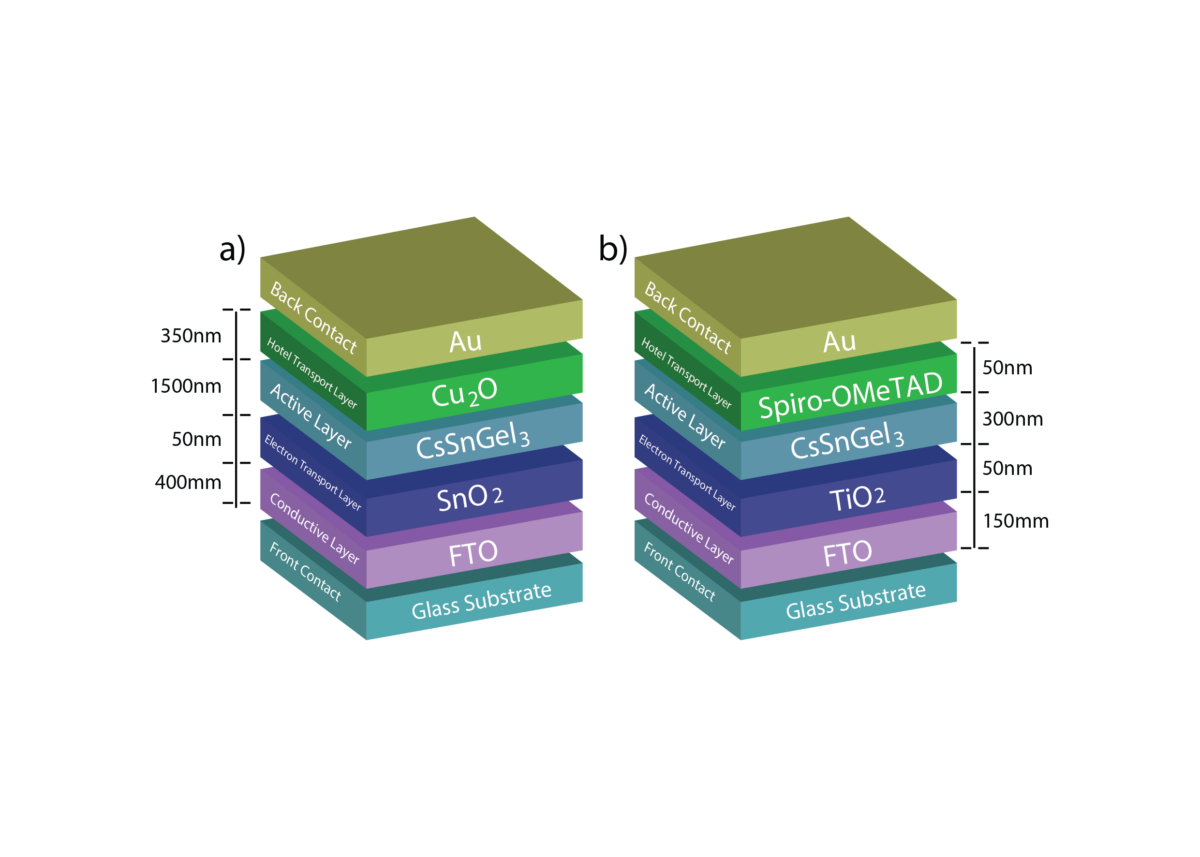A group of researchers led by Malaysia's Universiti Malaysia Perlis has designed a mixed cation perovskite solar cell based on a perovskite absorber integrating tin (Sn) and germanium (Ge) as mixed B cations.
Perovskite absorbers using mixed cations, commonly called cation A and cation B, have improved stability, light absorption, and higher charge carrier mobility. A cations are used to control the bandgap and stability of the perovskite material, while B cations are intended to modify electrical and optical characteristics of perovskites.
The scientists explained that using both elements in the B cation via “compositional engineering ” enables to reduce their respective defects and increase the cell performance, when compared to using each of them separately. Furthermore, the Ge atoms can replace Sn atoms in the perovskite crystal structure.
“This substitution helps prevent the formation of vacancies that can occur when Sn atoms are absent,” they added. “The addition of Ge fills these vacancies, stabilizing the crystal structure and reducing defects. Ge can also act as a substitute ion, specifically Ge2+, which helps maintain the charge balance in the crystal lattice and reduces the occurrence of charged defects.”
The scientists used the SCAPS-1D solar cell capacitance software, developed by the University of Ghent, to simulate the novel cell configuration. The cell was based on substrate made of glass and fluorine-doped tin oxide (FTO), an electron transport layer (ETL) based on either tin oxide (SnO2) or titanium dioxide (TiO2), the perovskite absorber integrating Sn anfd Ge, a hole-transporting layer (HTL) made with either Spiro-OMeTAD or copper(II) oxide (Cu2O), and a gold (Au) metal contact.
The team simulated the cell with different parameters, including layer thickness, bandgap, electron affinity, and relative dielectric permittivity, among others. It assumed the thickness of the absorber to range from 300 nm to 6,000 nm.
Popular content
Simulated under standard illumination condition, a solar cell with a 300 nm-thick absorber achieved a power conversion efficiency of 25.23%, an open-circuit voltage of 1.0410 V, a short-circuit current density of 27.4995 mA/cm2, and a fill factor of 88.14%. By contrast, a device with a 6,000 nm-thick absorber reached an efficiency of 31.73%, an open-circuit voltage of 1.0426 V, a short-circuit current density of 34.5235mA/cm2, and a fill factor of 88.11%.
“The increase in captured light at the maximum wavelength (920 nm) from 20.36 % to 58.89 % as the perovskite layer thickness increases from 300 nm to 1200 nm indicates improved light-trapping and reduced reflection losses,” the academics explained. “Additionally, the fill factor between 87 % and 88 %, with an efficiency increase from the initial configuration of 24.25 % to an optimum condition of 31.49 % at 293 K, shows that these solar cells have successfully collected and transported charge carriers.”
The novel cell architecture was presented in the study “Mixed cations tin-germanium perovskite: A promising approach for enhanced solar cell applications,” published in Helyion. Looking forward, the researchers said they want to validate the accuracy of models, identify discrepancies, and refine the research's parameters.
This content is protected by copyright and may not be reused. If you want to cooperate with us and would like to reuse some of our content, please contact: editors@pv-magazine.com.



Heating water is a large component of energy demand. With 60% or better efficiency, thermal solar collectors can’ depending on climate, meet 50 to 95% of this demand without exotic materials. Water is environmentally benign storage. Collectors last decades and are easily recycled. Pity this seems ignored. The same goes for retrofit building insulation and efficiency and fenestration.